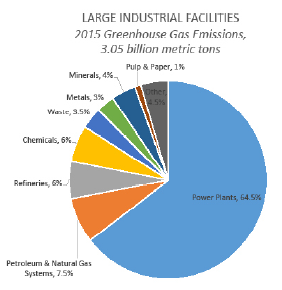Federal policy is vital to accelerate deployment of technologies that can curtail industrial sector carbon dioxide emissions, Portland Cement Association asserts in response to the U.S. Department of Energy Advanced Manufacturing Office’s (AMO) “Request for Information on Industrial Decarbonization Priorities.” Absent strong support from Washington, D.C., an AMO timeline to reach carbon neutrality across industry is unrealistic due to technical,…
Read MoreTag: cement production
Cement producers affirm capacity for boosts in public work, infrastructure
Sources: Portland Cement Association, Skokie, Ill.; CP staff
U.S. cement manufacturers have ample production capacity to meet increased demand from infrastructure revitalization efforts the Trump administration and Congress are contemplating, a PCA analysis finds. The industry is operating at roughly 79 percent of capacity, estimated at 108 million metric tons per year; coupled with terminal storage and transfer capabilities, PCA estimates, it is capable of supplying more than 150 million metric tons annually.
Read MoreCement production a blip on EPA greenhouse gas emissions radar
U.S. portland cement production accounts for just under 2.3 percent of carbon dioxide-equivalent (CO2e) emissions in the Environmental Protection Agency Greenhouse Gas Reporting Program 2015 data, which was released last month. Modern kilns increasingly running on natural gas and other coal alternatives, coupled with limited offsetting import factors, appear to position the domestic cement industry favorably in a business often tagged as the source of about 5 percent of global carbon dioxide emissions.
Read MoreLafarge R&D, Holcim Apasco veterans to oversee LafargeHolcim Americas businesses
Sources: LafargeHolcim Ltd., Zurich; CP staff
The 10-member LafargeHolcim Executive Committee has been realigned to reflect an evolved global cement, aggregate and concrete production asset portfolio, and close an integration phase commencing with the July 2015 Lafarge Group and Holcim Ltd. merger. Representing the Western Hemisphere are region heads Pascal Casanova, North America, and Oliver Osswald, Central & South America.
Read MoreCarbon wise, cement naive
Portland Cement Association’s European counterpart adds valuable perspective to a cement production and climate change dialog, responding to critics of member companies’ European Union Emissions Trading Scheme (EU ETS) participation.
Read MoreVulcan Materials expedites Lafarge exit from New Mexico
Sources: Vulcan Materials Co., Birmingham, Ala.; CP staff
Lafarge North America has sold five ready mixed concrete, three asphalt and three aggregate operations serving the Albuquerque, Rio Rancho and Santa Fe, N.M., markets. The integrated properties comprise one of six third-quarter acquisitions through which Vulcan Materials invested nearly $320 million emanating from the sale of Florida concrete and cement production assets earlier this year.
Read MoreFairbanks Scales, Plant Architects Pen Service, Support Agreement
Kansas City-based Fairbanks Scales will be providing exclusive support and service to construction materials specialist Plant Architects under the Plant Pride Extended Service Program. In addition to weighing systems, Fairbanks provides nationwide industrial equipment services for plant machinery and controls, aerial work platforms, electric security vehicles, and optical license plate readers.
Read MoreLafargeHolcim dovetails stepped up U.S., Canadian regulator cooperation
Lafarge SA and Holcim Ltd. officials see financial benefits and integration possibilities in their proposed “merger of equals,” netting LafargeHolcim—present in 90 countries with $44 billion in sales; 470 million and 384 million tons of cement and aggregate shipments, respectively; plus, 90 million yd. of ready mixed production. The strategy they outlined in Zurich and Paris last month leads to a mid-2015 1:1 share exchange, the merged business operating under executives and directors drawn equally from both companies.
Read MoreArgos Proceeds On Cemex-Blazed Trail
Merger and acquisition activity is off to a rapid clip in 2014, as a second year of broad-based housing starts kicks in, construction materials production assets recover from recession-skewed valuations, and major domestic and international operators stake claim to new markets, or rethink their scope.
Read More

